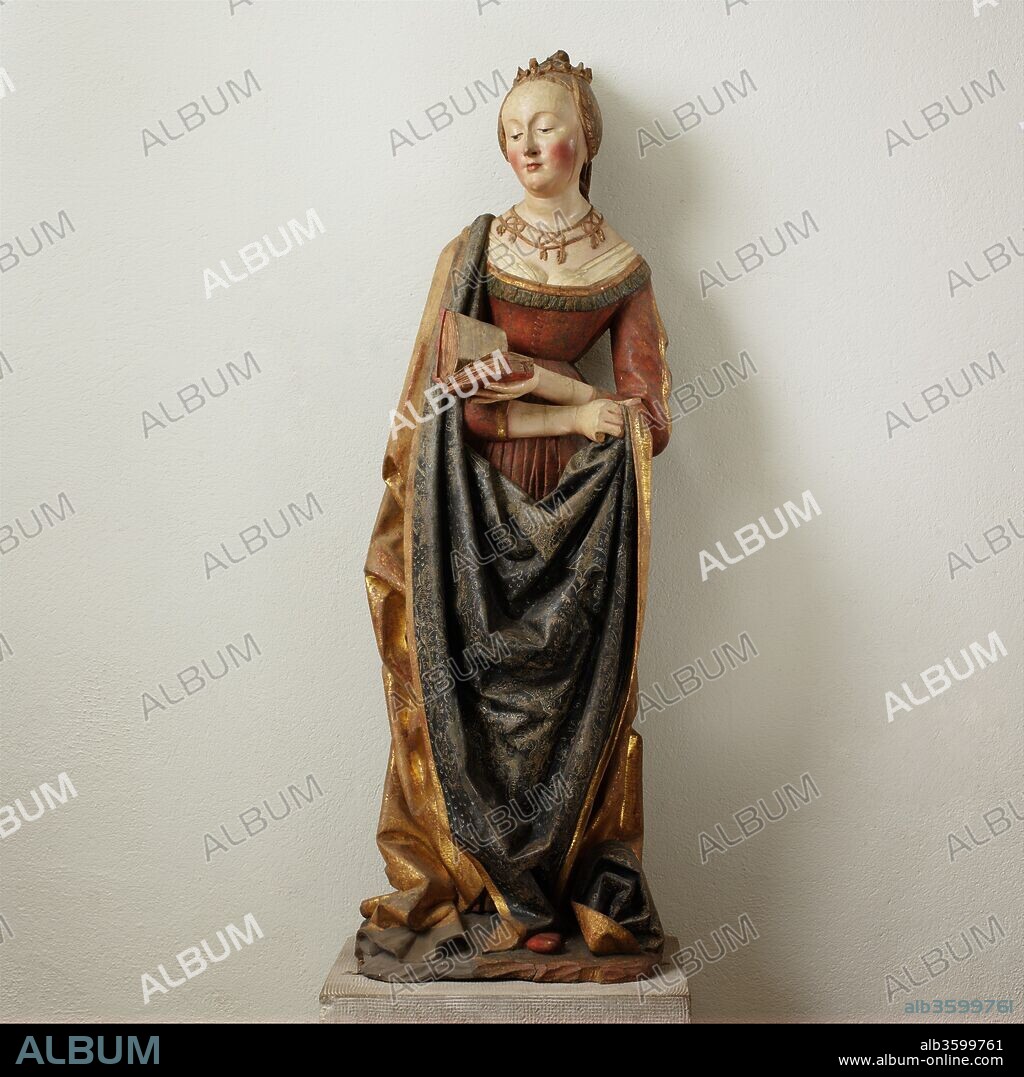alb3599761
SAINT BARBARA

|
Ajouter à une autre Lightbox |
|
Ajouter à une autre Lightbox |



Avez-vous déjà un compte? S'identifier
Vous n'avez pas de compte ? S'inscrire
Acheter cette image.
Sélectionnez l'usage:

Titre:
SAINT BARBARA
Légende:
Traduction automatique: Sainte Barbe. Culture : allemand. Dimensions : 50 1/4 × 17 × 13 1/4 in., 63 lb. (127,6 × 43,2 × 33,7 cm, 28576.613g). Date : env. 1490. Cette figure bien conservée de Sainte Barbara provenait de la châsse centrale du retable central de l'église de Saint Maurice sur le côté est du Rhin, au sud de Strasbourg. Le sanctuaire central a été démantelé avant le début du XVIIe siècle et les sculptures ont été consignées au charnier de Kippenheim. Les personnages désormais dispersés et les ailes peintes ont survécu, permettant la reconstruction du retable. Dédié à la Vierge, le groupe central et plus large de la Vierge à l'Enfant occupait une niche de hauteur étendue et était flanqué des saints Maurice et Catherine à gauche et des saints Barbara et Grégoire le Grand à droite. Les ailes extérieures représentaient l'Annonciation et la Visitation, et les ailes intérieures montraient la Nativité et l'Adoration des Bergers. Cette sculpture a conservé une grande partie de sa peinture d'origine et de sa décoration appliquée ; la robe rouge est rehaussée de motifs de brocart moulés et dorés à la cire, et la fine décoration du manteau a été réalisée par gravure à travers une couche d'indigo transparent sur de l'argent.
Saint Barbara. Culture: German. Dimensions: 50 1/4 × 17 × 13 1/4 in., 63 lb. (127.6 × 43.2 × 33.7 cm, 28576.613g). Date: ca. 1490.
This well-preserved figure of Saint Barbara came from the central shrine of the high altarpiece of the church of Saint Mauritius on the east side of the Rhine River, south of Strasbourg. The central shrine was dismantled prior to the early seventeenth century, and the sculptures were consigned to the charnel house in Kippenheim. The now-dispersed figures and the painted wings have survived, allowing for the reconstruction of the altarpiece. Dedicated to the Virgin, the central and larger group of the Virgin and Child occupied a niche of extended height and was flanked by Saints Mauritius and Catherine on the left and Saints Barbara and Gregory the Great on the right. The outer wings represented the Annunciation and the Visitation, and the inner wings showed the Nativity and the Adoration of the Shepherds.
This sculpture retains much of its original paint and appliqué decoration; the red dress is enhanced with molded and gilt-wax brocade patterning, and the fine decoration on the mantle was achieved by etching through a transparent indigo layer over silver.
Technique/matériel:
Limewood with paint
Musée:
Metropolitan Museum of Art, New York, USA
Crédit:
Album / Metropolitan Museum of Art, NY
Autorisations:
Modèle: Non - Propriété: Non
Questions sur les droits?
Questions sur les droits?
Taille de l'image:
3981 x 3982 px | 45.4 MB
Taille d'impression:
33.7 x 33.7 cm | 13.3 x 13.3 in (300 dpi)
 Pinterest
Pinterest Twitter
Twitter Facebook
Facebook Copier le lien
Copier le lien Email
Email
